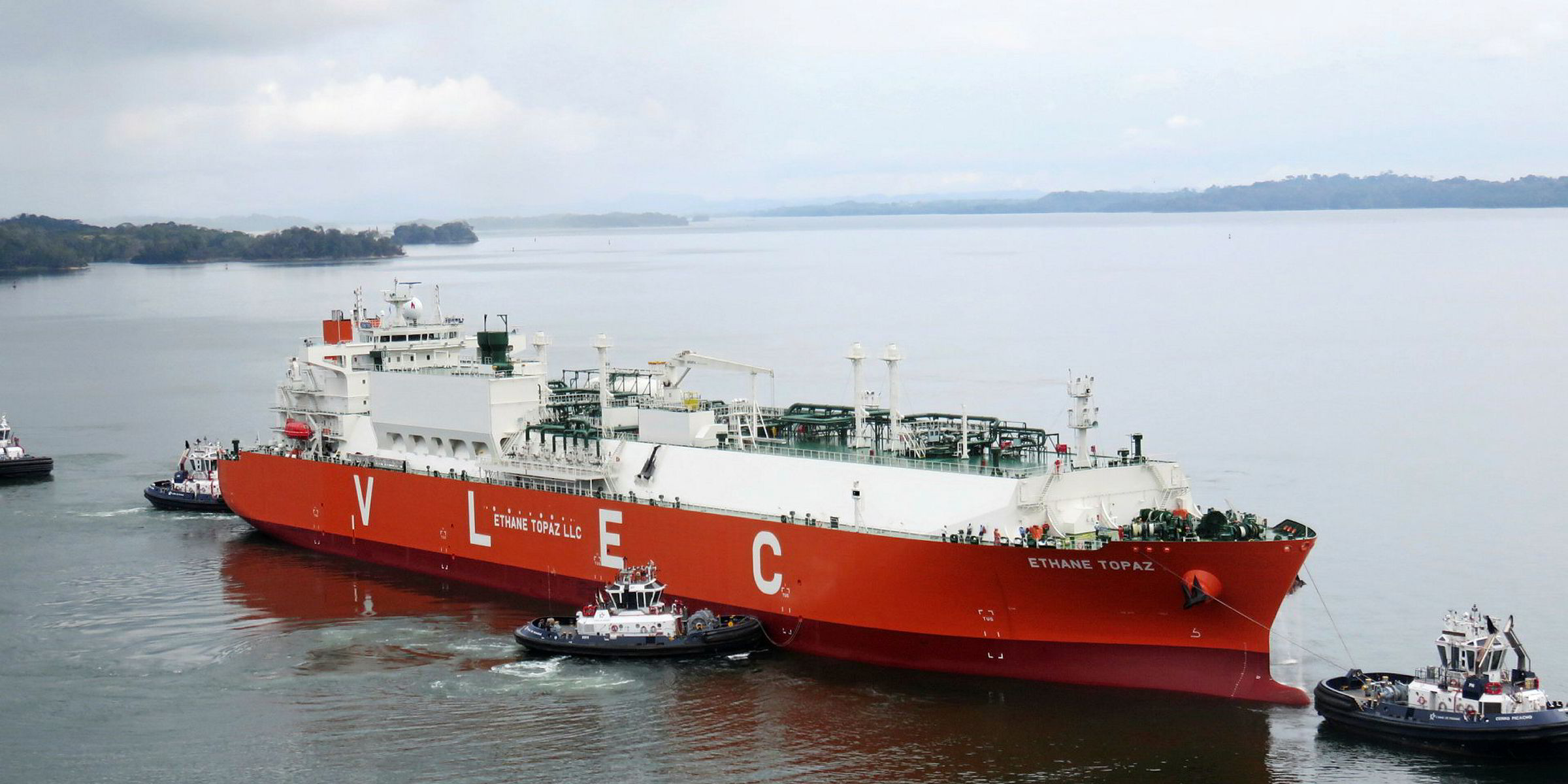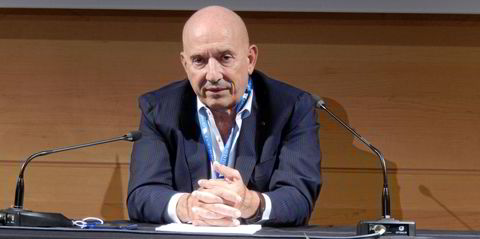A new trade in long-haul ethane shipments was established this year as India’s Reliance Industries put its six very large ethane carriers (VLECs) into operation shipping cargoes from Enterprise Products Partners’ export facility in the US to its Jamnagar refinery in Gujarat.
The first vessel, the 87,749-cbm Ethane Crystal (built 2016), left the US in December and now all of its sisterships are in operation.
The sextet, which is managed and commercially operated by Mitsui OSK Lines, was specially designed to ship 1.5 million tonnes per annum (mpta) of ethane to Reliance under its contract with Enterprise.
The VLECs were expected to herald the birth of a new, if perhaps niche, shipping sector as US production of ethane ramps up on the back of the country’s increased shale gas production.
However, aside from an apparently failed project in China — where just one vessel of five originally contracted with domestic operator Oriental Energy is being built — no other VLECs have been ordered.
But owners now say enquiries for the large gas carriers have resurfaced.
Gail (India) is one that has been looking at the trade. Observers say the gas buyer put out an enquiry to buy ethane on a delivered basis, prompting early day enquiry on shipping for these volumes. Some Chinese chemical companies are also understood to have been asking for similar quotes.
Those fielding questions on VLEC tonnage remain cautious on whether these enquiries will translate into newbuildings.
Ethane is produced as a constituent of the natural gas stream. Its main use is as a feedstock in the production of ethylene through the process of steam cracking, which is then processed into the most common form of plastic, polyethylene.
If prices fall too low on the back of excess supply then it is left in the dry gas stream, increasing the calorific value of the gas.
Ethane is shipped at -93 ℃ and can be lifted on ethylene carriers.
Transatlantic trades on purpose-built ships are already in play. Swiss-based petrochemicals firm Ineos Europe is taking the lead in shipping ethane on Evergas’ 27,500-cbm Dragon ships from Philadelphia in the US to facilities in Norway and Scotland.
But it is the long-haul trades to the centres of demand in India and Asia that the US producers are seeking to tap, with the aim of selling large volumes at attractive prices.
Supply is certainly abundant. Ethane production in the US is up this year on the back of an increase in US shale gas output, which is fuelling new LNG export facilities. For the past three years, the US Energy Information Administration figures show it has hovered at one million to 1.2 million barrels per day (mbpd).
But from this year output projections take a steeper trajectory, with production climbing to 1.8 mbpd by the end of 2018 and topping two mbpd before 2020.
The commercial realities are that there is a lot of ethane available in the US and they [US producers] want to sell it
This supply picture would appear to be matched by an increasing global appetite for plastics.
US domestic ethane demand is expected to rise as a series of six new crackers come onstream by the end of next year.
Outside of North America the petrochemical industry is registering the cheap prices seen in the US, market players say.
However, potential buyers will need to consider the costs of liquefaction, transportation and regasification, which can add $3 to $4 per MMBtu to the price of delivered ethane, and weigh the total against that of readily available alternatives, such as naphtha.
Buyers will also require import infrastructure, and that all-important and expensive cracker.
Reliance’s VLECs, which were constructed at Samsung Heavy Industries, came in at around $120.6m apiece. Owners costing similar newbuildings say that even with the fall in shipbuilding prices, a VLEC today would likely be priced at $25m to $30m more than a VLGC, which is currently tagged at about $70m.
“The commercial realities are that there is a lot of ethane available in the US and they [US producers] want to sell it,” one gas shipowner commented. “There is also a big demand from the petrochemical industry in Asia. But it depends on whether sales-and-purchase agreements can be secured, and if these can be fixed for long-term periods.”
So will recent VLEC enquiries result in a fresh round of newbuilding orders? “I’m not overly optimistic,” he added.




